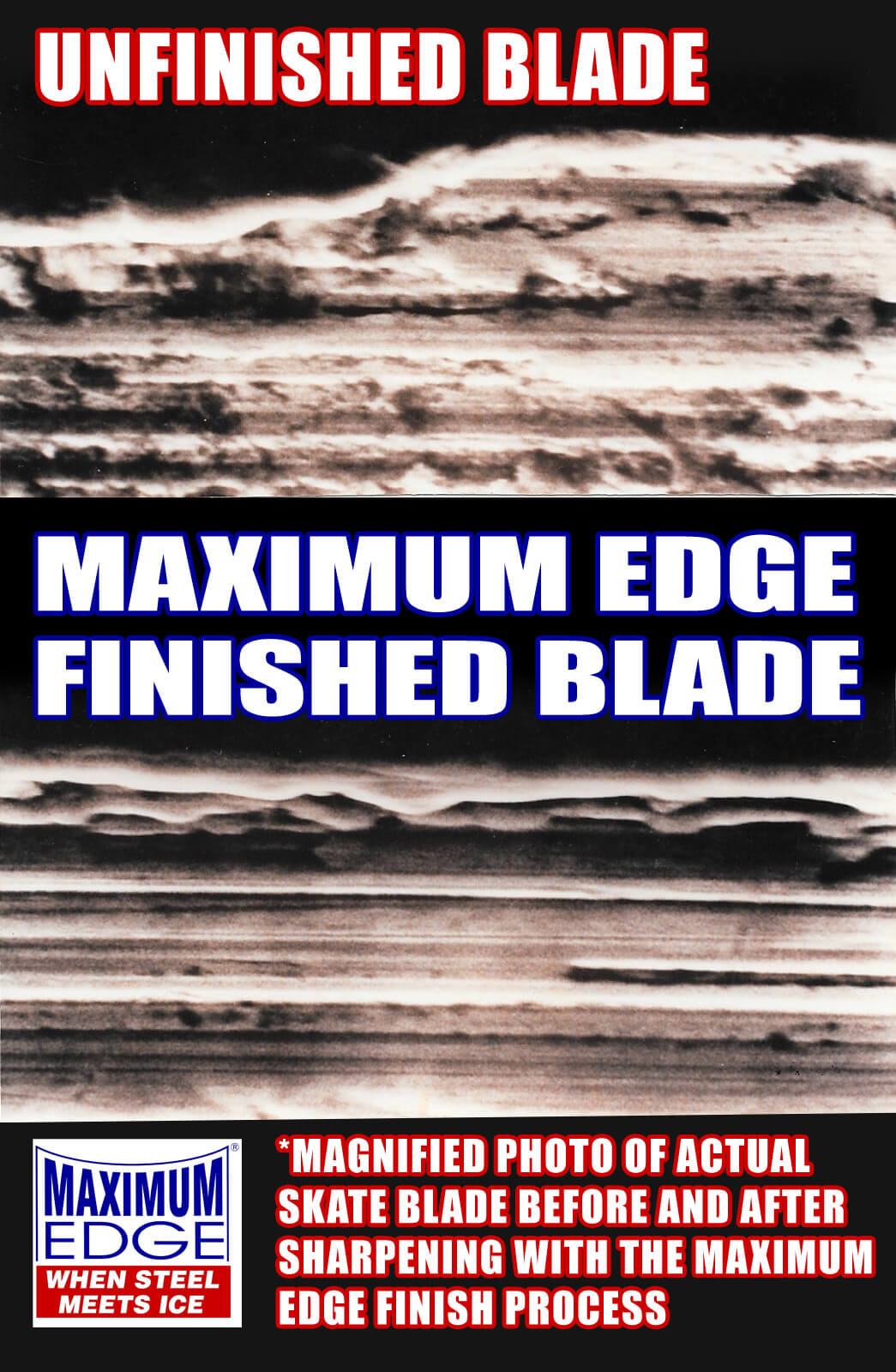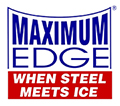MAXIMUM EDGE® PROFILE SYSTEM
-
SKATE PROFILING
A skater’s center of gravity is determined by the blade to ice contact surfaces, known as blade profile. A blade profile is the shape of the entire blade - end to end. Profiling is the matching of skate blades to each other and to the skater. Also finding the correct radius for the skater gives them the choice between more bite on take off vs more glide at top end. Radius depends on the skater, the skate and the ice conditions. Maximum Edge® recommends that all hockey skates should be profiled once a year and profile maintenance done after ten to twelve sharpening. Profile maintenance consists of checking the blades for consistency and correcting any differences. A skate sharpener who uses proper technique may slightly alter the blades after ten sharpening, but one poor sharpening can immediately change the profile. It is important to understand that the contact area of the blade profile determines the skater’s center of gravity which ultimately affects control and performance. Matching blade radius, profile and pitch to the skater’s individual skating style reduces body compensation and effectively increases the skater’s performance and confidence in the blades. Proper pitch puts the body in the neutral position, improving the number one factor of skating - which is control. A skater should be in control of the skates, not the skates in control of the skater.
An out of control skater usually falls, creating a high risk of injury. It is important for the customers to convey any skating problems to their sharpener, so that improvements in control can be made.
Maintaining the desired profile over the life of the blade requires consistency. If the blade radius, profile, length of the skating surface and blade heights are changing from sharpening to sharpening, the skater is constantly compensating because of those changes. Body compensations use energy and usually generate unwanted physical stress.
Matching blade radius, profile and pitch to the skater’s individual skating style reduces body compensation and effectively increases the skater’s performance and confidence in the blades. Proper pitch puts the body in the neutral position, improving the number one factor of skating - which is control. A skater should be in control of the skates, not the skates in control of the skater.
An out of control skater usually falls, creating a high risk of injury. It is important for the customers to convey any skating problems to their sharpener, so that improvements in control can be made.
Maintaining the desired profile over the life of the blade requires consistency. If the blade radius, profile, length of the skating surface and blade heights are changing from sharpening to sharpening, the skater is constantly compensating because of those changes. Body compensations use energy and usually generate unwanted physical stress.
